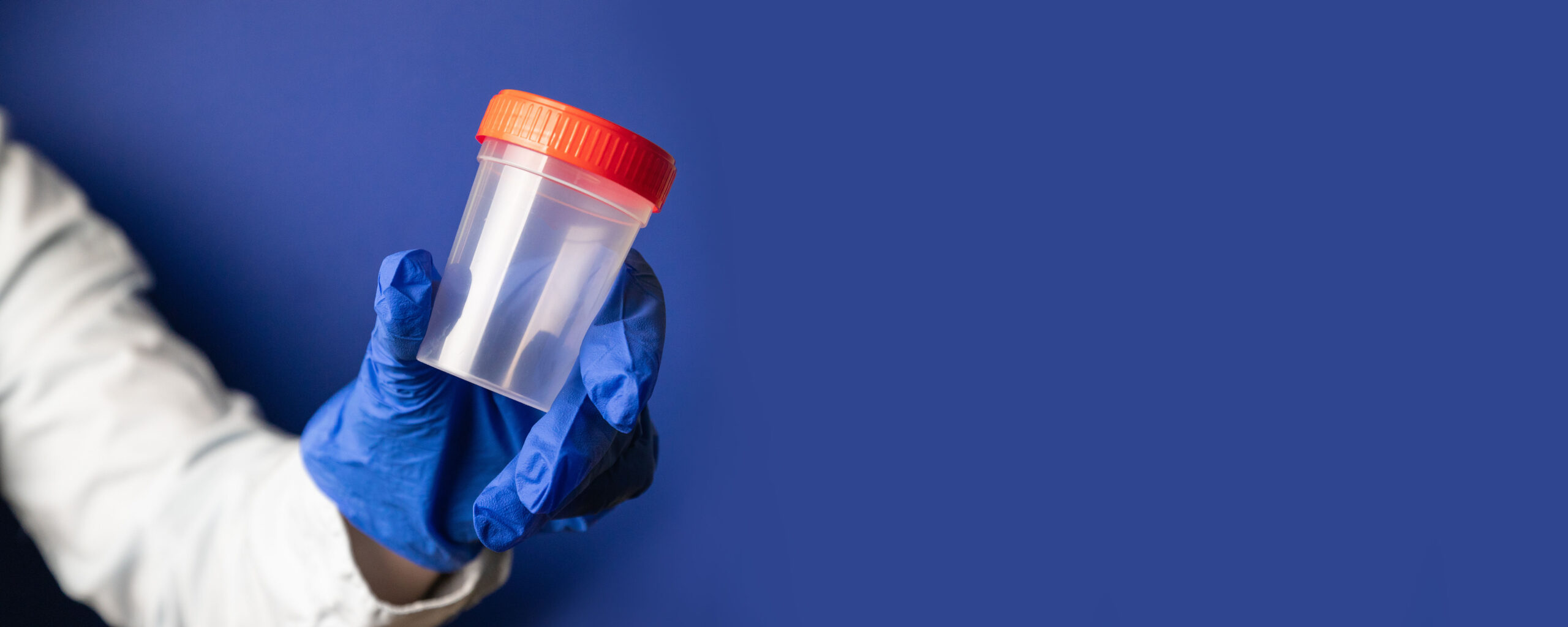


Exploring Instant Drug Testing Kits for Employers
May 22, 2023


Oral Fluid Drug Testing: Comprehensive Guide and Comparison
May 22, 2023Alcohol testing supplies play a crucial role in ensuring workplace safety and compliance with industry regulations. As substance abuse continues to be a concern for businesses, implementing an effective alcohol testing program is essential to mitigate risks and maintain productivity. In this blog post, we will examine the various alcohol testing supplies available, their advantages in the workplace, and how to select appropriate products for your business requirements.
We will also provide tips on establishing clear policies and procedures for conducting tests while maintaining proper maintenance and care of these critical tools. By understanding the various aspects of alcohol testing supplies and their implementation in the workplace, companies can create safer environments that promote employee well-being and success.
Table of contents
- Types of Alcohol Testing Supplies
- Benefits of Using Alcohol Testing Supplies in the Workplace
- How to Choose the Right Alcohol Testing Supplies for Your Business Needs
- 4 Tips for Implementing an Effective Alcohol Testing Program in the Workplace
- Maintenance and Care of Alcohol Testing Supplies
- Frequently Asked Questions Alcohol Testing Supplies
- Conclusion
Types of Alcohol Testing Supplies
When it comes to workplace alcohol testing, there are various types of supplies available to help ensure the safety and well-being of employees. Each type has its advantages and disadvantages, making it essential for businesses to understand their options before implementing a testing program. In this section, we will discuss three common types of alcohol testing supplies: breathalyzers, saliva tests, and urine tests.
a. Breathalyzers
Breathalyzers are instruments used to detect the amount of alcohol present in a person's breath by analyzing air samples exhaled from their lungs. They provide quick results and are non-invasive compared to other methods like blood or urine tests. Different models of breathalyzers exist, ranging in portability, accuracy and cost.
- Advantages: Fast results; non-invasive; portable; multiple-use.
- Disadvantages: Can be expensive depending on model/features; requires regular calibration for accurate readings.
b. Saliva Tests
Saliva tests, also known as oral fluid tests or mouth swab tests, can detect recent alcohol consumption within minutes after use by collecting a small sample from inside the person's mouth using a swab stick or strip test kit device designed specifically for this purpose.
- Advantages: Non-invasive; easy-to-administer; detects recent usage quickly.
- Disadvantages: Less accurate than breathalyzers or blood tests; may not detect low levels of alcohol consumption.
c. Urine Tests
Urine tests for alcohol are another common method used in workplace testing, as they can detect the presence of alcohol metabolites in an individual's system even after the effects have worn off. These tests typically require a urine sample to be collected and sent to a laboratory for analysis.
- Advantages: Can detect past usage (up to several days); non-invasive compared to blood tests; relatively inexpensive.
- Disadvantages: Longer wait time for results due to lab processing; less accurate than breathalyzers or blood tests; potential privacy concerns during sample collection.
In order to choose the most suitable type of alcohol testing supplies for your business, it is essential first to understand each method's pros and cons. By doing so, you can ensure that the selection of alcohol testing supplies will be optimal for your business and guarantee a safe working environment.
Alcohol testing supplies provide a variety of options to ensure accuracy and reliability when detecting alcohol in the workplace. By utilizing these tools, employers can benefit from improved safety, reduced risk of liability and legal issues, as well as enhanced employee morale and job satisfaction.
Benefits of Using Alcohol Testing Supplies in the Workplace
Implementing alcohol testing supplies in the workplace can lead to numerous benefits for both employers and employees. The advantages of using alcohol testing supplies in the workplace include increased safety, greater productivity, decreased potential for legal problems, and improved staff morale and job contentment.
Improved Safety and Productivity
By using alcohol testing supplies, employers can identify potential risk posed by intoxicated employees before accidents or injuries occur on the job, thereby improving safety and productivity. By utilizing alcohol testing supplies such as breathalyzers or saliva tests, organizations can detect those who may have consumed alcohol prior to them creating any incidents or harm in the workplace. This proactive approach helps maintain a safe working environment while also promoting increased productivity among employees.
Reduced Risk of Liability and Legal Issues
In cases where accidents occur due to an intoxicated employee, businesses may face potential lawsuits or regulatory penalties if they fail to take appropriate measures against substance abuse in the workplace. Implementing regular alcohol testing procedures demonstrates that a company is taking steps towards maintaining a drug-free environment, which could help protect them from liability claims related to workplace accidents involving alcohol use.
Enhanced Employee Morale and Job Satisfaction
- Fair treatment: When all employees are subject to random alcohol testing, it ensures fair treatment across the board by eliminating any perception of favoritism or discrimination.
- A safer work environment: Employees will appreciate working in an environment where their safety is prioritized, leading to higher job satisfaction and loyalty.
- Support for those struggling: Alcohol testing can help identify employees who may be struggling with alcohol abuse, allowing companies to offer support and resources such as Employee Assistance Programs (EAPs).
Incorporating alcohol testing into the workplace can be advantageous for employers by helping to mitigate risks posed by intoxicated personnel, while also advancing a more beneficial work atmosphere that promotes worker welfare. By investing in these tools, businesses can demonstrate their commitment towards maintaining a safe and productive working environment for all staff members.
Employers can reap many advantages by utilizing alcohol testing supplies in the workplace, such as enhanced security and efficiency, decreased potential for liability or legal difficulties, along with augmented employee morale and job fulfillment. Moving on to how you can choose the right alcohol testing supplies for your business needs, it is important to consider budgeting constraints while also evaluating accuracy, reliability, ease-of-use and understanding any regulatory requirements that may be applicable.
How to Choose the Right Alcohol Testing Supplies for Your Business Needs
Selecting the appropriate alcohol testing supplies for your business is crucial in ensuring an effective and efficient workplace testing program. When deciding which alcohol testing supplies to use for your business, take into account budget, accuracy, reliability, ease of utilization and any industry-specific regulatory demands.
Consider Your Budget and Cost-Effectiveness
The first step in choosing the right alcohol testing supplies is determining your budget. Ensure that the chosen products offer a balance between quality and cost-effectiveness for your organization. Compare prices from different suppliers, taking into account not only initial costs but also ongoing expenses such as maintenance and calibration services.
Evaluate Accuracy, Reliability, and Ease of Use
In addition to considering costs when selecting alcohol testing supplies like breathalyzers or saliva tests, evaluate their accuracy levels by reviewing product specifications or consulting with experts in this field if needed (source). Ensure that devices meet established standards of precision (e.g., Food & Drug Administration-approved) while being user-friendly enough so employees can easily operate them without extensive training.
- Accuracy: Look for devices with a high level of sensitivity and specificity - these will provide more reliable results than less accurate alternatives.
- Reliability: Opt for well-known brands with a reputation for producing durable equipment designed to withstand regular use over time.
- Ease of Use: Choose devices featuring intuitive interfaces and simple instructions, ensuring that employees can quickly learn how to use them effectively.
Understand Regulatory Requirements for Your Industry
Lastly, it's essential to familiarize yourself with any industry-specific regulations governing alcohol testing in your workplace. For example, the Department of Transportation (DOT) has strict guidelines on drug and alcohol testing procedures for safety-sensitive positions (source). Research these requirements thoroughly before purchasing equipment or implementing a testing program to ensure compliance and avoid potential legal issues down the line.
Choosing the right alcohol testing supplies for your business needs is an important decision that requires careful consideration of budget, accuracy, reliability and ease of use. Having taken into account the factors of cost, accuracy, dependability and usability, one can now move ahead with putting in place a functional alcohol testing system at work.
4 Tips for Implementing an Effective Alcohol Testing Program in the Workplace
Implementing an effective alcohol testing program in your workplace is crucial to ensure safety, productivity, and compliance with regulations. The following tips will help you establish a successful program that meets your business needs:
1. Establish Clear Policies and Procedures
Firstly, develop clear policies outlining the purpose of alcohol testing within your organization. Outline when alcohol tests will be done (e.g., prior to hiring, randomly), the repercussions for failing a test or declining it, and any subsequent steps such as treatment or guidance programs in your policies.
In addition to policies, create procedures that outline how alcohol tests will be administered consistently across all employees. Ensure these procedures are well-documented and easily accessible by staff members who need them.
2. Provide Training to Employees on Proper Use of Equipment
To maintain accuracy and reliability in test results, it's essential that employees administering the tests are trained properly on using alcohol testing equipment. Conduct regular training sessions covering topics such as proper usage techniques for breathalyzers or saliva tests, understanding result interpretation guidelines from manufacturers' instructions manuals, maintaining confidentiality during the process, and troubleshooting common issues with devices. This ensures accurate results while minimizing potential errors due to improper handling or lack of knowledge about device operation.
3. Monitor Compliance with Regular Audits
Audit your company's alcohol testing program regularly to ensure ongoing compliance with established policies and procedures as well as industry-specific regulations like those set forth by DOT or OSHA. These audits should include reviewing test records for accuracy and completeness, evaluating the effectiveness of training programs, and identifying any potential areas for improvement in policies, procedures, or equipment usage. Regular audits not only help maintain compliance but also provide valuable insights into how your alcohol testing program can be further optimized to better serve your organization's needs.
4. Consider Drug Testing for Comprehensive Substance Abuse Prevention
While alcohol testing is an important component of workplace safety, it's also important to consider implementing drug testing as part of a comprehensive substance abuse prevention program. Drug tests can detect the presence of illegal drugs or prescription medications that can impair an employee's ability to work safely and effectively. By combining alcohol and drug testing, you can create a more robust program that addresses a wider range of potential substance abuse issues.
Implementing an effective alcohol testing program requires careful planning, clear policies and procedures, proper training, and ongoing monitoring and evaluation. By following these tips, you can establish a program that promotes safety, productivity, and compliance in your workplace.
Having an efficient alcohol screening system in the workplace is necessary for establishing a secure and productive setting. With proper maintenance of equipment, employers can be confident that their tests are accurate and reliable. To ensure the dependability of alcohol testing equipment, it is critical to be aware of how to appropriately maintain them.
Maintenance and Care of Alcohol Testing Supplies
Maintaining your alcohol testing supplies is crucial for ensuring accurate results and prolonging the life of your equipment. In this section, we will discuss best practices for cleaning and sanitizing equipment after each use, storing equipment properly to maintain accuracy, and scheduling regular calibration checks.
A. Cleaning and Sanitizing Equipment After Each Use
Proper cleaning and sanitization are essential in preventing contamination between tests. Follow these steps to clean your alcohol testing supplies:
- Breathalyzers: Wipe down the exterior with a soft cloth dampened with warm water or an approved cleaning solution. Replace mouthpieces after each use to prevent cross-contamination.
- Saliva Tests: Dispose of used test strips according to manufacturer guidelines or local regulations on biohazard waste disposal.
- Urine Tests: Clean collection cups thoroughly using soap and water before reuse if applicable; otherwise, utilize disposable cups that can be discarded after one-time use.
B. Storing Equipment Properly to Maintain Accuracy
To ensure consistent performance from your alcohol testing supplies, proper storage is key. Here are some tips on how to store different types of alcohol testing devices:
- Breathalyzers: Avoid exposing breathalyzer devices to extreme temperatures or humidity levels by storing them in a cool, dry place when not in use. Keep away from direct sunlight as it may damage internal components over time.
- Saliva and Urine Tests: Store test kits in a cool, dry place away from direct sunlight. Check the manufacturer's guidelines for specific storage temperature ranges to maintain optimal performance.
C. Scheduling Regular Calibration Checks
Regular calibration checks are essential for ensuring accurate results from your alcohol testing equipment. Most manufacturers recommend calibrating breathalyzers every six months or after 500 tests. Follow these steps to schedule regular calibration checks:
- Contact the manufacturer or an authorized service center to inquire about their recommended calibration schedule.
- Maintain a log of all calibrations performed on each device, including dates and any adjustments made during the process.
- If using saliva or urine tests, follow the expiration date printed on each test kit package to ensure accuracy over time.
By following these maintenance and care tips for your alcohol testing supplies, you can help ensure that your workplace remains safe and compliant with industry regulations while maintaining accurate results from your devices.
Frequently Asked Questions Alcohol Testing Supplies
What is the best method of testing for alcohol?
The most accurate and reliable method for detecting alcohol consumption is through breathalyzers, which measure blood alcohol concentration (BAC) directly from a person's breath. Breathalyzers provide instant results, are non-invasive, and widely accepted in legal settings. However, other methods like saliva tests and urine tests can also be effective depending on specific needs.
How long can EtG alcohol be detected in urine?
Ethyl glucuronide (EtG) is a metabolite of ethanol that can be detected in urine for up to 80 hours after the last drink, depending on factors such as individual metabolism rates and hydration levels. This makes it an ideal biomarker for monitoring recent alcohol consumption or abstinence compliance in alcohol treatment programs.
What are the most common alcohol tests?
The three most common types of alcohol testing methods include:
- Breathalyzer tests - measures BAC using a portable device,
- Saliva tests - detects presence of ethanol within oral fluids,
- Urine tests - screens for EtG to determine recent consumption history.
What can cause false positive EtG?
A false-positive EtG result may occur due to incidental exposure to products containing small amounts of ethanol like mouthwashes, hand sanitizers, or certain medications. To minimize this risk during testing procedures, strict sample collection protocols and confirmatory tests are recommended.
Conclusion
Alcohol testing supplies are essential tools for companies that prioritize safety and productivity in the workplace. Choices of alcohol testing gear, including breathalyzers, saliva sampling and urine tests, are available for businesses to pick the most suitable solution depending on their budgetary constraints, accuracy needs and regulatory compliance requirements.
By implementing an effective alcohol testing program that includes clear policies and procedures, employee training, regular audits, and proper maintenance of equipment, companies can reduce the risk of liability issues while enhancing employee morale and job satisfaction.
If you're looking for high-quality alcohol testing supplies for your business needs at competitive prices with exceptional customer service support. Contact Halux Diagnostic today to learn more about our products.





